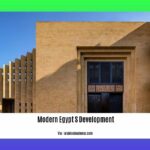Hey there, history and art buffs! Get ready for a visual journey through time as we explore the captivating world of the Great Pyramid of Khufu. Through a mesmerizing collection of photos, we’ll uncover the secrets and stories held within this ancient wonder. From its towering presence to its intricate details, prepare to be amazed by the enduring legacy of the pharaohs and the remarkable achievements of human ingenuity.
A Glimpse Through Time: The Great Pyramid in Pictures
The Great Pyramid of Khufu, an icon of ancient Egypt, has captivated hearts and minds for centuries. Through the lens of photographers, artists, and explorers, we gain a deeper understanding of its construction, purpose, and visual transformation over time.
Capturing History: From Ancient Drawings to Modern Photography
Early depictions of the pyramid, including intricate drawings and paintings, offer invaluable glimpses into how it was perceived throughout history. These visual time capsules demonstrate how artistic interpretations and cultural perspectives have evolved over time.
Today, photographers continue to capture the pyramid’s magnificence from every angle. Aerial shots reveal its colossal scale against the vast desert landscape, while close-ups expose the intricate details of its massive stone blocks — each piece a testament to the skill and artistry of its builders.
Unlocking Secrets: Journeys to the Heart of the Pyramid
Venturing inside the pyramid, photographers unveil the secrets hidden within its depths. Images of the chambers and passageways, shrouded in darkness and mystery, offer a unique perspective on the pharaoh’s journey into the afterlife. These photographs ignite our imaginations, allowing us to step back in time and contemplate the rituals and beliefs of a civilization long gone.
The Human Connection: A Timeless Perspective
Photographs of the Great Pyramid often feature people—tiny figures dwarfed by its immensity. Tourists, photographers, and researchers alike are drawn to its grandeur, reminding us that the allure of ancient wonders transcends time. These images underscore the human desire to connect with the past and grasp the achievements of our ancestors.
Artistic Interpretations: Seeing the Pyramid Through Different Lenses
Photography has profoundly shaped our perception of the Great Pyramid. Some photographers strive for realism, documenting its present-day condition, while others embrace artistic expression, utilizing unique perspectives and techniques to evoke emotion and wonder. From time-lapse photography that showcases the interplay of light and shadow to abstract compositions that highlight form and texture, the pyramid continues to inspire creative interpretation.
Preserving the Past: The Role of Photography in Conservation
Beyond their aesthetic appeal, photographs of the Great Pyramid play a crucial role in conservation efforts. By documenting its current state, researchers and archaeologists can monitor its condition, identify areas of concern, and develop strategies for preserving this invaluable treasure for future generations.
Recreating Grandeur: What Did the Great Pyramid Really Look Like?
Today, we see the Great Pyramid of Giza as a monumental structure of weathered stone blocks. But imagine it in its prime—a breathtaking spectacle that would have astonished anyone who laid eyes upon it. Let’s peel back the layers of time and reconstruct the pyramid’s original splendor.
The pyramid’s exterior was once covered in gleaming white limestone casing stones, meticulously polished to a mirror-like finish. These stones, quarried from Tura across the Nile, were so expertly fitted together that their joints were practically invisible. Under the desert sun, the effect would have been dazzling—like a beacon of light radiating across the Giza Plateau.
And if the gleaming white limestone wasn’t impressive enough, consider the apex. Though lost to time, the pyramidion, as it’s known, was likely crafted from a rare and precious metal—perhaps electrum, a naturally occurring blend of gold and silver. This shining capstone, catching the sunlight, would have created an awe-inspiring spectacle, visible for miles across the desert.
But the grandeur didn’t stop there. Leading up to this magnificent structure was a causeway—a grand processional route paved and enclosed by walls. This causeway connected the pyramid complex to a valley temple, now lost to the shifting sands of time. While we can only imagine the details of the valley temple, the causeway suggests a carefully orchestrated journey, perhaps symbolizing the pharaoh’s final passage into the afterlife.
Our understanding of the Great Pyramid’s original appearance continues to evolve as new discoveries come to light. Ongoing research and advanced technologies, such as 3D modeling, help us refine our vision of this ancient wonder. One thing is certain: the Great Pyramid, with its gleaming white casing and potential golden apex, was not merely a tomb. It was a symbol of power, a testament to human ingenuity, and a physical manifestation of the Pharaoh’s divine connection to the sun god Ra.
A Testament to Time: Is the Great Pyramid Still Standing?
The fact that the Great Pyramid of Khufu still stands today, after over 4,600 years, is a testament to the ingenuity and skill of the ancient Egyptians. It has weathered the elements, the test of time, and even the plundering of its outer casing stones, yet its core structure remains remarkably intact.
While it may no longer possess the gleaming white limestone casing and potential gold capstone that once adorned it, the Great Pyramid remains an awe-inspiring sight. This endurance speaks volumes about the advanced building techniques employed by its creators. They didn’t just pile up rocks; they carefully planned and executed a structure designed to last for eternity.
The Great Pyramid is more than just a pile of ancient stones; it’s a time capsule containing clues about a civilization that thrived millennia ago. Through ongoing archaeological digs, we continue to uncover new insights into the pyramid’s construction, purpose, and the people who built it.
So yes, the Great Pyramid of Khufu still stands tall, a beacon of ancient ingenuity and a reminder of the enduring power of human ambition. It’s a monument that continues to inspire awe and wonder, beckoning us to explore its mysteries and unravel the secrets of a bygone era.
Why Does the Pyramid of Khufu Still Fascinate Us?
Why, after all these centuries, do we still find ourselves captivated by the Pyramid of Khufu? Its enduring allure lies in its ability to connect us to a distant past, reminding us of humanity’s boundless capacity for innovation and achievement.
The sheer scale of the Great Pyramid is hard to comprehend. Built with millions of massive stone blocks, each precisely cut and placed without the aid of modern technology, its construction is a testament to human ingenuity and determination. What’s even more remarkable is that we’re still not entirely sure how they did it. Theories abound, ranging from ingenious ramp systems to water-based transportation methods, adding to the pyramid’s mystique.
But the Great Pyramid is more than just a remarkable feat of engineering; it’s a symbol of ancient Egyptian beliefs and their complex understanding of the afterlife. Within its hidden chambers and passages, we catch glimpses of their rituals, their cosmology, and their reverence for their pharaohs, who were considered divine intermediaries between the gods and the mortal realm. The pyramid’s alignment with cardinal directions speaks to their sophisticated knowledge of astronomy and mathematics.
The Great Pyramid’s enduring presence also compels us to contemplate our place within the vast tapestry of time. It has stoically endured as empires have risen and fallen, as technologies have transformed, and as countless generations have come and gone. As the last remaining Wonder of the Ancient World, it serves as a poignant reminder of our own mortality and the enduring legacy of human civilization.
But perhaps the most profound reason for the Pyramid of Khufu’s enduring fame is its ability to inspire wonder. It challenges our understanding of what’s possible and reminds us of the power of human ambition, ingenuity, and the enduring quest to leave our mark on the world.
Exploring Further: The Mysteries of History Await
If you’re eager to delve deeper into the mysteries of the past, be sure to check out these other captivating historical enigmas:
- Unravel the mystery of Pizarro’s Gold, the legendary lost treasure of the conquistadors.
- Delve into the intriguing history of Nikumaroro Island, Kiribati and the disappearance of Amelia Earhart.
- Unveiling the Enigma: Mansoureh Khojasteh Bagherzadeh’s Public Appearances & Private Life in Iran - July 18, 2025
- Unveiling the Mystery: Mansoureh Khojasteh Bagherzadeh’s Husband: A Rare Glimpse into a Private Life - July 18, 2025
- Unveiling Masoud Khamenei’s Mother: Power, Influence, and Iran’s Future - July 18, 2025















